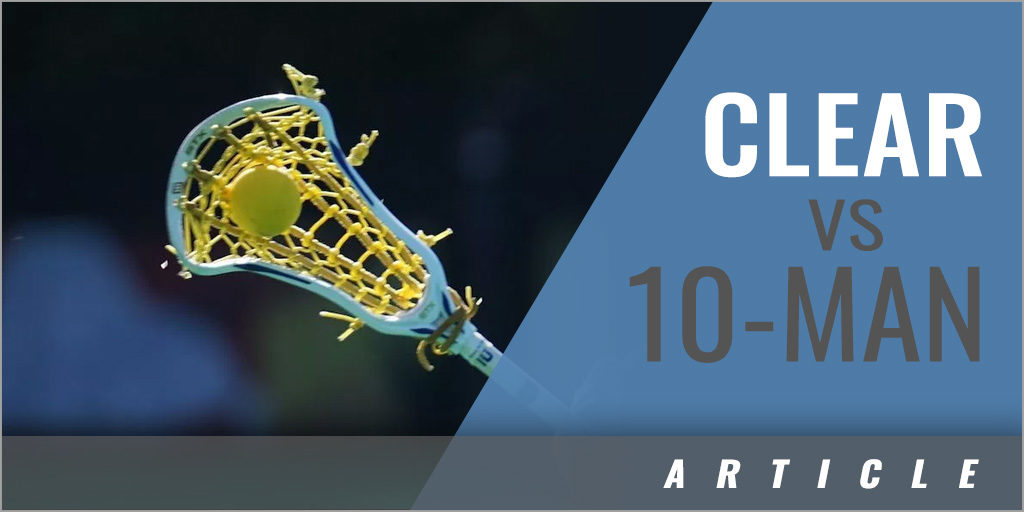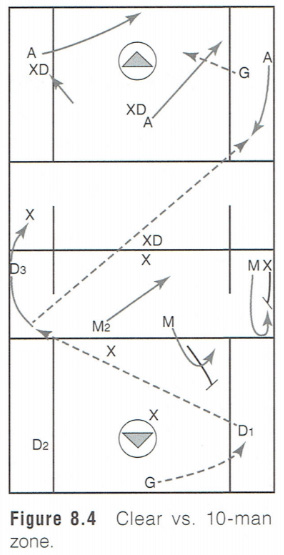|
By: Jack Kaley and Rich Donovan Originally Published in: Lacrosse Essentials Provided by: Human Kinetics
On a 10-man-zone ride, the riding team attempts to bring the center defenseman up into the ride near the midline. This gives them an extra man on the offensive side of the field to apply more pressure on the ball. Although only six men can be in the offensive zone, this forces the far-side riding midfielder to be back on the defensive side. It also forces the goalie to leave the goal area and cover an attackman in some situations. Against this ride, bring your high defenseman and midfielder, who are normally at the midline, 10 yards down, roughly between the midline and the restraining line. Two diagonal passes will beat the 10-man zone if it is recognized and reacted to quickly. When D1 gets the ball, M1 and M2 cut immediately. D3 cuts to the ball on the far side. He will momentarily be open because the man playing him has to stay back onside. When M3 gets the ball, he passes diagonally to A1, who cuts up on the far sideline for the ball. Al should be open because the goalie covering him had to retreat to the goal when M3 caught the pass. On a 10-man ride, the goalie can only cover a man when the ball is deep in the clearing defensive side of the field. Once the ball gets up near the midline, the goalie must release his man and retreat to the goal. This gives the clearing team a man-up advantage if they move the ball quickly. (See figure 8.4.) |








